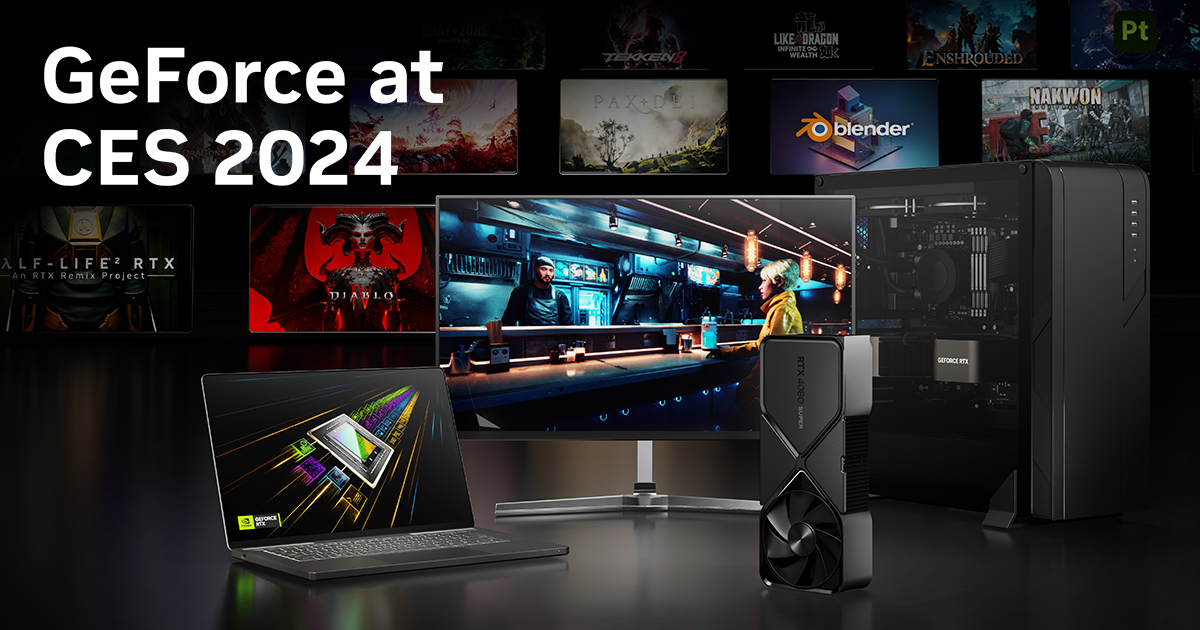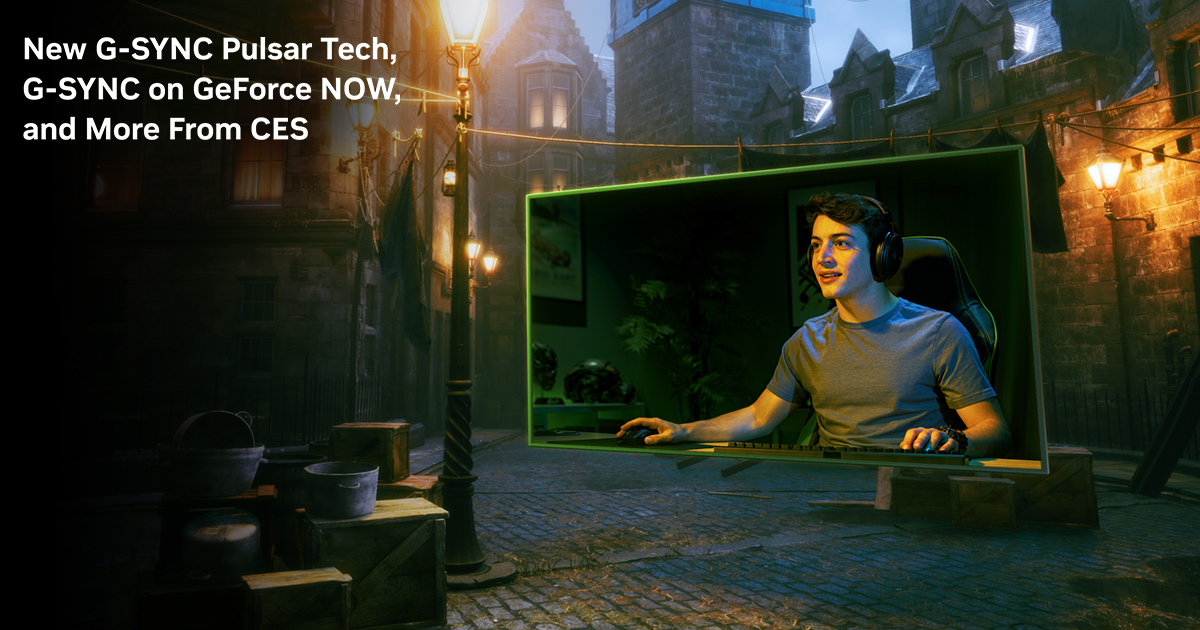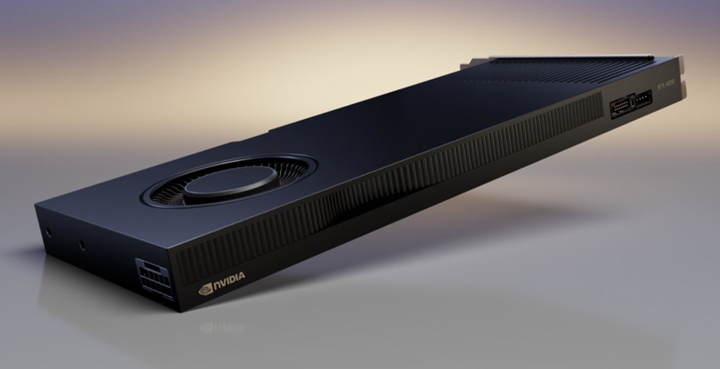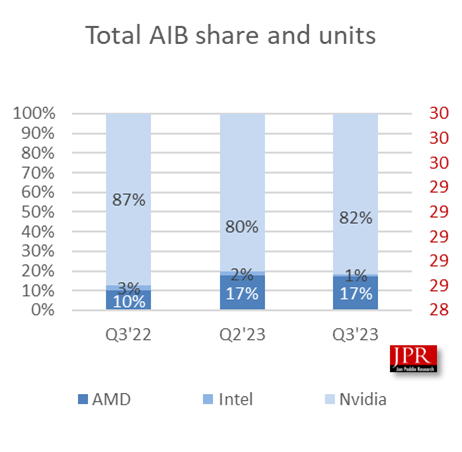Francisco-based AI company, is developing AI for tractors that can weed, fertilize, and spray. This AI-compatible robot tractor is said to be equipped with NVIDIA's Jetson Orin .
You are using an out of date browser. It may not display this or other websites correctly.
You should upgrade or use an alternative browser.
You should upgrade or use an alternative browser.
NVIDIA discussion [2024]
- Thread starter pharma
- Start date

NVIDIA launches GeForce RTX 40 SUPER series: $999 RTX 4080S, $799 RTX 4070 TiS and $599 RTX 4070S - VideoCardz.com
NVIDIA officially launches its new SUPER series Three new GeForce desktop cards. NVIDIA Founders Edition cards for some of the latest GPUs have been sent out to reviewers. The RTX 4070 SUPER and 4080 SUPER are among these models set to receive this reference edition. In terms of pricing, the...
Seems near enough confirmed.
Still all way more than they should cost. For $1000, we should be getting a further cut down AD102 high end part, not just a fully enabled upper midrange part.
4070Ti Super at least gets an upgrade to AD103, but as this is still the equivalent of previous x104 parts, $800 is not a good price. It's a decently cut down upper midrange part at the end of the day. For $800. smh
4070 Super makes the original, absolutely awful value 4070Ti largely obsolete, but we're still talking a cut down, normal midrange part for $600.
Damn you AMD for flubbing RDNA3 so hard...
That's you're baseless take and nothing more.upper midrange part
This mentions the 4070 Super having only 36MB of L2. That's a lot less than the previously reported 48MB. Will be interesting to see how much this matters vs the full 48MB 4070Ti.
NVIDIA launches GeForce RTX 40 SUPER series: $999 RTX 4080S, $799 RTX 4070 TiS and $599 RTX 4070S - VideoCardz.com
NVIDIA officially launches its new SUPER series Three new GeForce desktop cards. NVIDIA Founders Edition cards for some of the latest GPUs have been sent out to reviewers. The RTX 4070 SUPER and 4080 SUPER are among these models set to receive this reference edition. In terms of pricing, the...videocardz.com
Seems near enough confirmed.
Still all way more than they should cost. For $1000, we should be getting a further cut down AD102 high end part, not just a fully enabled upper midrange part.
4070Ti Super at least gets an upgrade to AD103, but as this is still the equivalent of previous x104 parts, $800 is not a good price. It's a decently cut down upper midrange part at the end of the day. For $800. smh
4070 Super makes the original, absolutely awful value 4070Ti largely obsolete, but we're still talking a cut down, normal midrange part for $600.
Damn you AMD for flubbing RDNA3 so hard...
You dont know what the word 'baseless' means if you think that's the case, as I've explained this plenty in the past, you just HATE hearing it for reasons we're all very well aware of here.That's you're baseless take and nothing more.
AD103 is absolutely an upper midrange part. Any reasonable person will be able to understand that. But you are not reasonable, as you've already admitted that if Nvidia had priced a 750Ti at $2000, you'd call it a high end GPU(and probably would have defended the price somehow, too). It's just absurd.
This is very silly… you’re both arguing semantics and word definitions in an infinite loop. This is a technical forum, not an english literature club!
Anyway, I wonder how high the volumes will be for RTX 4080 Super vs other AD103 models going forward. If it’s a high percentage, that would imply the yields are now very high since there’s no redundancy in that SKU...
Anyway, I wonder how high the volumes will be for RTX 4080 Super vs other AD103 models going forward. If it’s a high percentage, that would imply the yields are now very high since there’s no redundancy in that SKU...
Last edited:
4080 Super doesn't look so attractive vs the 4070Ti Super. I would've considered spending another $200 for the 4070Ti Super back when I got my 4070. But not for the 4070Ti. $800 for a 12GB card was the rawest deal in a lineup of raw deals.This is silly… you’re both arguing semantics and word definitions in an infinite loop. This is a technical forum, not an english literature club.
Anyway, I wonder how high the volumes will be for RTX 4080 Super vs other AD103 models going forward. If it’s a high percentage, that would imply the yields are now very high since there’s no redundancy in that SKU.
This is silly… you’re both arguing semantics and word definitions in an infinite loop. This is a technical forum, not an english literature club.
Anyway, I wonder how high the volumes will be for RTX 4080 Super vs other AD103 models going forward. If it’s a high percentage, that would imply the yields are now very high since there’s no redundancy in that SKU.
To be fair the words have historically meant something. But I agree they lose all meaning when people use arbitrary definitions of midrange, high end etc.
You would expect a 400mm^2 die on a mature process to have comfortable margins at $1000. Too bad for us die cost has little to do with what people are willing to pay for a graphics card.
arandomguy
Regular
In terms of framing the discussion from a pure numbers perspective AD104 is lower relative to AD102 than GA104 was to GA102 or past x04 to x02. Whether or not that's because AD104 was shifted down stack, with AD103 slotting in, or AD102 was shifted up stack, or a combination of both is another debate.
As you can see if you look at the relative hardware budget (in terms of die size/memory) relative to the highest end x02 die than AD103 is really more akin to GA104 and that AD104 is much closer to GA106 than GA104.
So if GA102 was considered high end, GA104 mid, and GA106 low in terms of relative classification then AD102 would be high, AD 103 mid, and AD106 low. Or maybe AD102 SUPER high end, AD103 high end, AD104 mid, AD106 low.
But I will say in terms of the end product stack the AD103 with the RTX 4080 Super relative to the RTX 4090 is more analogues now if we take RTX 3070ti and RTX 3080ti as the comparison. I think we do have to be a bit fair here with the RTX 4090 and RTX 3090 comparison in that RTX 3090 was more fully enabled and had much more VRAM relative to everything else then it exists with this generation, as such a large part of the premium was for the VRAM.
| GA102 | 628 mm² | 384 bit |
| GA104 | 392 mm² | 256 bit |
| GA106 | 276 mm² | 192 bit |
| AD102 | 609 mm² | 384 bit |
| AD103 | 379 mm² | 256 bit |
| AD104 | 294 mm² | 192 bit |
As you can see if you look at the relative hardware budget (in terms of die size/memory) relative to the highest end x02 die than AD103 is really more akin to GA104 and that AD104 is much closer to GA106 than GA104.
So if GA102 was considered high end, GA104 mid, and GA106 low in terms of relative classification then AD102 would be high, AD 103 mid, and AD106 low. Or maybe AD102 SUPER high end, AD103 high end, AD104 mid, AD106 low.
But I will say in terms of the end product stack the AD103 with the RTX 4080 Super relative to the RTX 4090 is more analogues now if we take RTX 3070ti and RTX 3080ti as the comparison. I think we do have to be a bit fair here with the RTX 4090 and RTX 3090 comparison in that RTX 3090 was more fully enabled and had much more VRAM relative to everything else then it exists with this generation, as such a large part of the premium was for the VRAM.
Last edited:
DavidGraham
Veteran
NVIDIA made two new technologies and announced them at CES24: RTX Video HDR, and G-Sync Pulsar (variable frequency strobing)


RTX Video HDR adds a new AI-enhanced feature to all GeForce RTX GPUs, instantly converting any Standard Dynamic Range (SDR) video playing in internet browsers into vibrant High Dynamic Range (HDR).

GeForce At CES 2024: SUPER GPUs, 14 New RTX Games, Accelerating Gen AI, G-SYNC Innovations, RTX Remix Open Beta, Twitch Enhanced Broadcasting & More
Get the complete rundown on all of our GeForce announcements from CES 2024.
www.nvidia.com
G-SYNC Pulsar is the next evolution of Variable Refresh Rate (VRR) technology, not only delivering a stutter-free experience and buttery smooth motion, but also a new gold standard for visual clarity and fidelity through the invention of variable frequency strobing. This boosts effective motion clarity to over 1000Hz on the debut ASUS ROG Swift PG27 Series G-SYNC gaming monitor, launching later this year.
No longer will users have to choose between the smooth variable refresh, or the improved motion clarity of Ultra Low Motion Blur (ULMB) – our new G-SYNC Pulsar technology delivers all the benefits of both, working in perfect harmony to deliver the definitive gaming monitor experience.

G-SYNC Displays Dazzle At CES 2024: G-SYNC Pulsar Tech Unveiled, G-SYNC Comes To GeForce NOW, Plus 24 New Models
NVIDIA G-SYNC Pulsar is the first and only display tech to deliver flawless variable frequency strobing, variable refresh, and variable overdrive, together establishing a new gold standard for motion clarity and stutter-free gameplay; the ASUS ROG Swift PG27 series G-SYNC monitor with Pulsar...
www.nvidia.com
Super series improves things but they are still overpriced. Will probably be worse with the 5000 series since AMD will only be competing at the low end.
Yeah there’s almost no chance prices are coming down from here. Best case scenario is performance increases enough to make upgrades worthwhile.
By definition it’s not overpriced if people are buying it though. The only way prices come down is if the buying stops.
Thanks for providing the data! I think it's slightly complicated by the fact that TSMC 4N is nearly certainly >2x as expensive per wafer than Samsung 8nm (not sure exactly how much, some of the public claims by analysts would imply ~3x, but I'm not sure whether that's right). So ~380mm2 on 4N is (supposedly) more like 760mm2 on 8nm, which would make AD103 *more* expensive per die than GA102.
GA102 628 mm² 384 bit GA104 392 mm² 256 bit GA106 276 mm² 192 bit AD102 609 mm² 384 bit AD103 379 mm² 256 bit AD104 294 mm² 192 bit
As you can see if you look at the relative hardware budget (in terms of die size/memory) relative to the highest end x02 die than AD103 is really more akin to GA104 and that AD104 is much closer to GA106 than GA104.
On the other hand, part of the reason the dies are bigger is the massive L2 caches which is what allows them to reduce the memory bus width and save costs on that side. Ironically, that might not be as effective as it looked during planning since GDDR6 prices crashed compared to a couple of years ago. Memory prices in general are in a down cycle, but I do wonder whether both NVIDIA and AMD going for large caches to reduce memory requirements played a part in reducing GDDR6 demand, therefore reducing some of the cost benefit of the cache itself...
Either way it seems clear that NVIDIA's margins are significantly better than in previous generations. On the bright side, that gives AMD a chance to compete (and also Intel with their huge perf/mm2 disadvantage!). If NVIDIA was selling at their historical margins, then AMD might struggle to be competitive at all with Navi 3x, and hopefully we can all agree that would be worse for the industry in general.
January 3, 2024

 www.jonpeddie.com
The market shares for the desktop discrete GPU suppliers shifted in the quarter, as Nvidia’s market share increased from last quarter by 2%, and AMD’s share increased from last year by 7%. Intel, which entered the AIB market in Q3’22 with the Arc A770 and A750, remained flat, as the company has yet to gain significant traction in the add-in board market.
www.jonpeddie.com
The market shares for the desktop discrete GPU suppliers shifted in the quarter, as Nvidia’s market share increased from last quarter by 2%, and AMD’s share increased from last year by 7%. Intel, which entered the AIB market in Q3’22 with the Arc A770 and A750, remained flat, as the company has yet to gain significant traction in the add-in board market.


Graphics add-in board shipments see a significant rise during Q3 2023
Quarter to quarter, graphics AIB shipments increased tremendously by 37.4% and increased by 30.0% year to year.

They could at least have released a fully enabled AD102. They have price hiked them up some 50% since launch so at least give customers the full die.Yeah there’s almost no chance prices are coming down from here. Best case scenario is performance increases enough to make upgrades worthwhile.
By definition it’s not overpriced if people are buying it though. The only way prices come down is if the buying stops.
They could at least have released a fully enabled AD102. They have price hiked them up some 50% since launch so at least give customers the full die.
Doesn’t the price hike imply people are buying the current cut down parts at the inflated prices? What incentive is there to release a lower yielding part?
arandomguy
Regular
Thanks for providing the data! I think it's slightly complicated by the fact that TSMC 4N is nearly certainly >2x as expensive per wafer than Samsung 8nm (not sure exactly how much, some of the public claims by analysts would imply ~3x, but I'm not sure whether that's right). So ~380mm2 on 4N is (supposedly) more like 760mm2 on 8nm, which would make AD103 *more* expensive per die than GA102.
That's why I'm focusing the discussion on the relative size to the x02 die for each generation, as this would normalize for the different process costs as all Ampere was on Samsung 8nm and all Ada is TSMC 4N. This means we're looking at relative positioning not absolute positioning. My feeling, and this certainly isn't unique, is that there's been some shrinkflation essentially this generation as well in terms of the overall marketing strategy. You can see how they really tried to push this basically a step too far with the RTX 4080 12GB strategy.
| Die Size relative to x02 | Memory Bus Width relative to x02 | |
| GA102 | 100% | 100% |
| GA104 | 62% | 66% |
| GA106 | 44% | 50% |
| AD102 | 100% | 100% |
| AD103 | 62% | 66% |
| AD104 | 48% | 50% |
Similar threads
- Replies
- 21
- Views
- 1K
- Replies
- 27
- Views
- 3K
- Replies
- 7
- Views
- 951
- Replies
- 1K
- Views
- 87K


